Wikipedia

The Boeing B-52 Stratofortress is an American long-range, subsonic, jet-powered strategic bomber. The B-52 was designed and built by Boeing, which has continued to provide support and upgrades. It has been operated by the United States Air Force (USAF) since the 1950s. The bomber can carry up to 70,000 pounds (32,000 kg) of weapons,[2] and has a typical combat range of around 8,800 miles (14,200 km) without aerial refueling.[3]
Beginning with the successful contract bid in June 1946, the B-52 design evolved from a straight wing aircraft powered by six turboprop engines to the final prototype YB-52 with eight turbojet engines and swept wings. The B-52 took its maiden flight in April 1952. Built to carry nuclear weapons for Cold War–era deterrence missions, the B-52 Stratofortress replaced the Convair B-36 Peacemaker. A veteran of several wars, the B-52 has dropped only conventional munitions in combat. The B-52's official name Stratofortress is rarely used but is instead called Buff.
The B-52 has been in service with the USAF since 1955. There are 72 aircraft in inventory as of 2022;[8] 58 operated by active forces (2nd Bomb Wing and 5th Bomb Wing), 18 by reserve forces (307th Bomb Wing), and about 12 in long-term storage at the Davis-Monthan AFB Boneyard.[2][3][9][10][11] The bombers flew under the Strategic Air Command (SAC) until it was disestablished in 1992 and its aircraft absorbed into the Air Combat Command (ACC); in 2010, all B-52 Stratofortresses were transferred from the ACC to the new Air Force Global Strike Command (AFGSC). Superior performance at high subsonic speeds and relatively low operating costs have kept them in service despite the advent of later, more advanced strategic bombers, including the Mach 2+ Convair B-58 Hustler, the canceled Mach 3 North American XB-70 Valkyrie, the variable-geometry Rockwell B-1 Lancer, and the stealth Northrop Grumman B-2 Spirit. The B-52 completed 60 years of continuous service with its original operator in 2015. After being upgraded between 2013 and 2015, the last airplanes are expected to serve into the 2050s.
21st Century Service

In August 2007, a B-52H ferrying AGM-129 ACM cruise missiles from Minot Air Force Base to Barksdale Air Force Base for dismantling was mistakenly loaded with six missiles with their nuclear warheads. The weapons did not leave USAF custody and were secured at Barksdale.[219][220]
Four of 18 B-52Hs from Barksdale Air Force Base were retired and were in the "boneyard" of 309th AMARG at Davis-Monthan Air Force Base as of 8 September 2008.
In February 2015, hull 61-7 Ghost Rider became the first stored B-52 to fly out of Davis-Monthan Air Force Base after six years in storage.In May 2019, a second aircraft was resurrected from long-term storage in Davis-Monthan. The B-52, nicknamed "Wise Guy", had been at AMARG since 2008. It flew to Barksdale Airforce Base on May 13, 2019. It was completed in four months by a team of 13-20 maintainers from the 307th Maintenance Squadron.[223]
B-52s are periodically refurbished at USAF maintenance depots such as Tinker Air Force Base, Oklahoma.[224] Even while the USAF works on the new Long Range Strike Bomber, it intends to keep the B-52H in service until 2050, which is 95 years after the B-52 first entered service, an unprecedented length of service for any aircraft, civilian or military.[3][225][226][Note 7]
The USAF continues to rely on the B-52 because it remains an effective and economical heavy bomber in the absence of sophisticated air defenses, particularly in the type of missions that have been conducted since the end of the Cold War against nations with limited defensive capabilities. The B-52 has also continued in service because there has been no reliable replacement.[229] The B-52 has the capacity to "loiter" for extended periods, and can deliver precision standoff and direct fire munitions from a distance, in addition to direct bombing. It has been a valuable asset in supporting ground operations during conflicts such as Operation Iraqi Freedom.[230] The B-52 had the highest mission capable rate of the three types of heavy bombers operated by the USAF in the 2000–2001 period. The B-1 averaged a 53.7% ready rate, the B-2 Spirit achieved 30.3%, and the B-52 averaged 80.5%.[194] The B-52's US$72,000 cost per hour of flight is more than the B-1B's US$63,000 cost per hour, but less than the B-2's US$135,000 per hour.[231]
The Long Range Strike Bomber program is intended to yield a stealthy successor for the B-52 and B-1 that would begin service in the 2020s; it is intended to produce 80 to 100 aircraft. Two competitors, Northrop Grumman and a joint team of Boeing and Lockheed Martin, submitted proposals in 2014;[232] Northrop Grumman was awarded a contract in October 2015.[233]
On 12 November 2015, the B-52 began freedom of navigation operations in the South China Sea in response to Chinese human-made islands in the region. Chinese forces, claiming jurisdiction within a 12-mile exclusion zone of the islands, ordered the bombers to leave the area, but they refused, not recognizing jurisdiction.[234] On 10 January 2016, a B-52 overflew parts of South Korea escorted by South Korean F-15Ks and U.S. F-16s in response to the supposed test of a hydrogen bomb by North Korea.[235]
On 9 April 2016, an undisclosed number of B-52s arrived at Al Udeid Air Base in Qatar as part of Operation Inherent Resolve, part of the military intervention against ISIL. The B-52s took over heavy bombing after B-1 Lancers that had been conducting airstrikes rotated out of the region in January 2016.[236] In April 2016, B-52s arrived in Afghanistan to take part in the war in Afghanistan and began operations in July, proving its flexibility and precision carrying out close-air support missions.[237]
According to a statement by the U.S. military, an undisclosed number of B-52s participated in the U.S. strikes on pro-government forces in eastern Syria on 7 February 2018.[238]
A number of B-52s were deployed in airstrikes against the Taliban during the 2021 Taliban offensive.[239]
In 2022, the US Air Force used a B-52 as a platform to test a Hypersonic Air-breathing Weapon Concept (HAWC) missile.[240]
In late October 2022, ABC News reported that the USAF intended to deploy six B-52s at RAAF Tindal in Australia in the near future, which would include building facilities to handle the aircraft
Extras
B-52 Flying over F-16
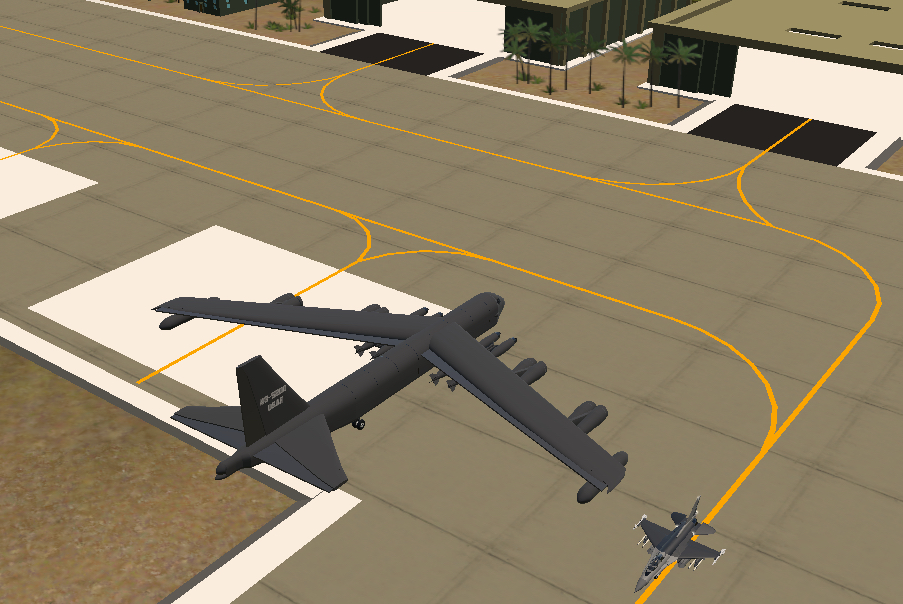
B-52 Stationery at Yeager Air Base
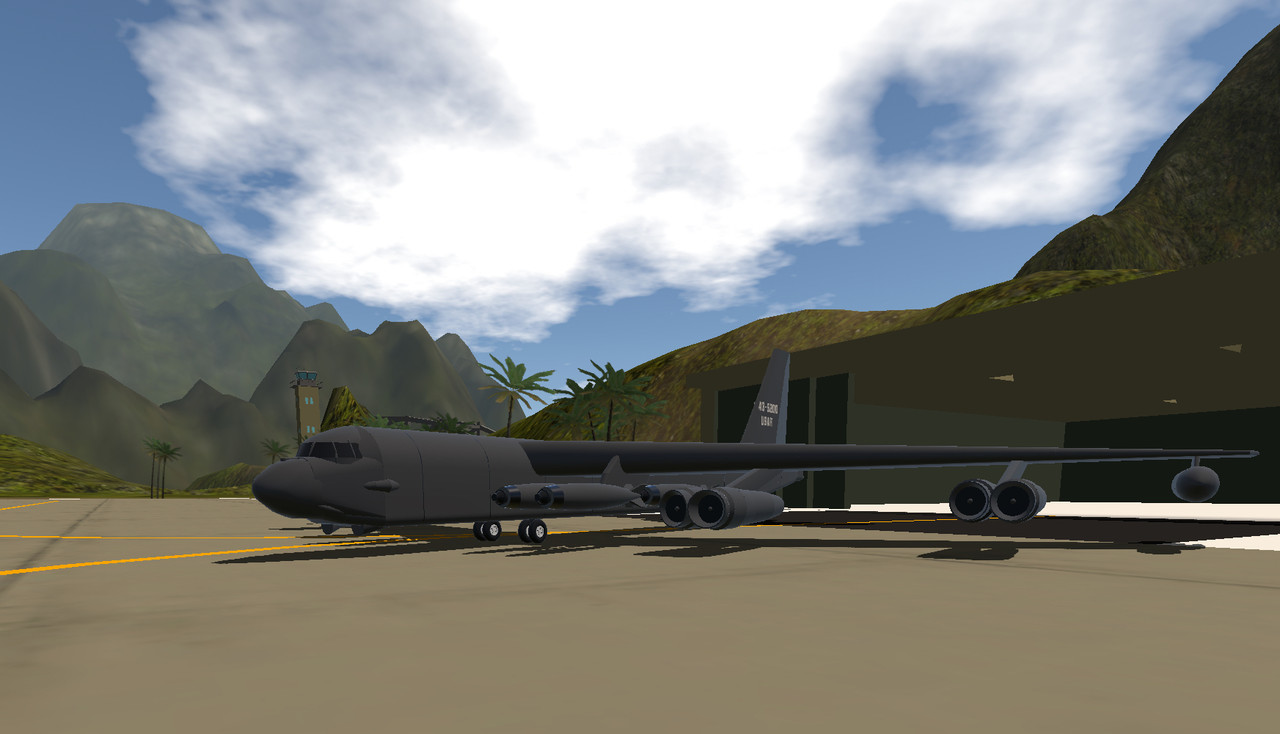
B-52 Overhead a B-17
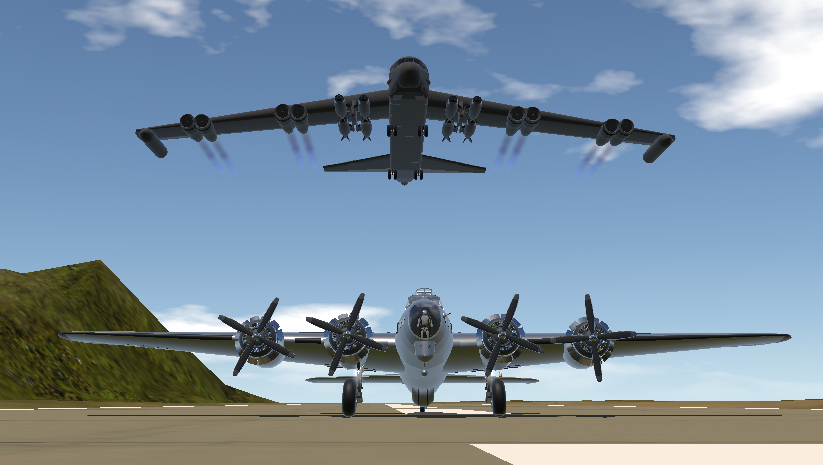
Specifications
General Characteristics
- Created On iOS
- Wingspan 133.7ft (40.8m)
- Length 112.5ft (34.3m)
- Height 30.7ft (9.4m)
- Empty Weight 83,872lbs (38,043kg)
- Loaded Weight 85,037lbs (38,572kg)
Performance
- Power/Weight Ratio 3.171
- Wing Loading 35.8lbs/ft2 (174.6kg/m2)
- Wing Area 2,377.5ft2 (220.9m2)
- Drag Points 50241
Parts
- Number of Parts 356
- Control Surfaces 7
- Performance Cost 1,753


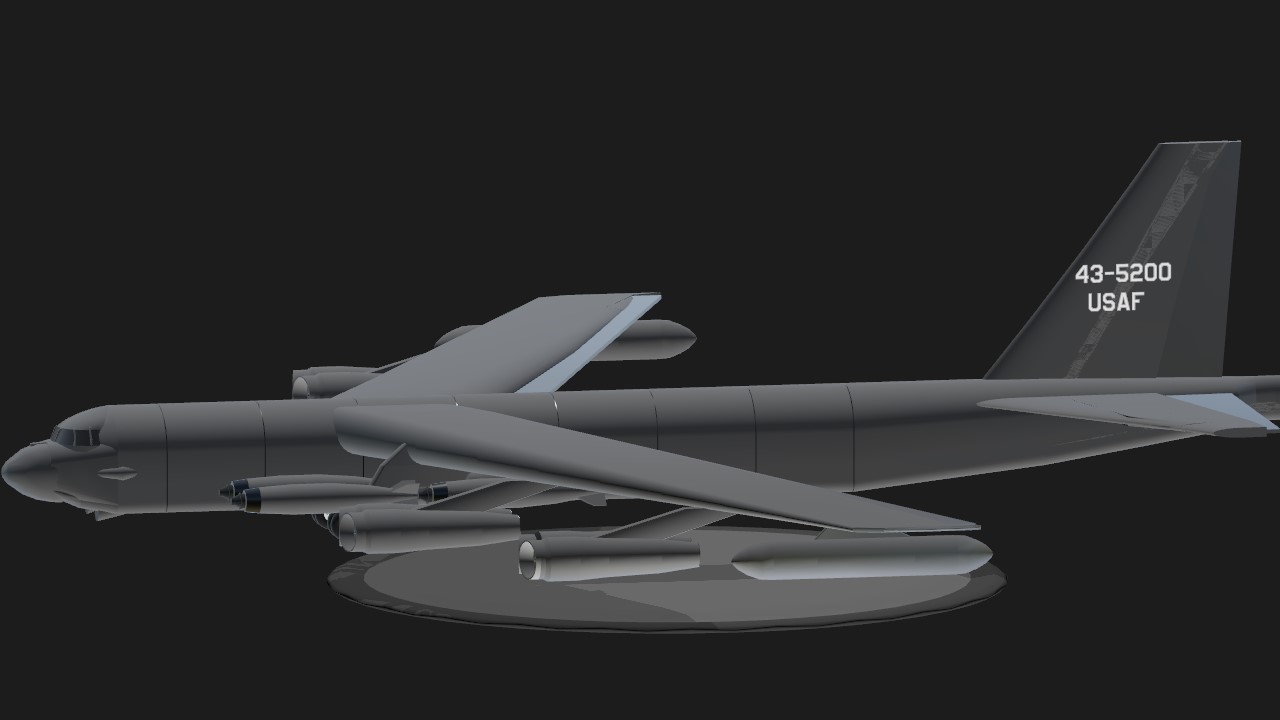
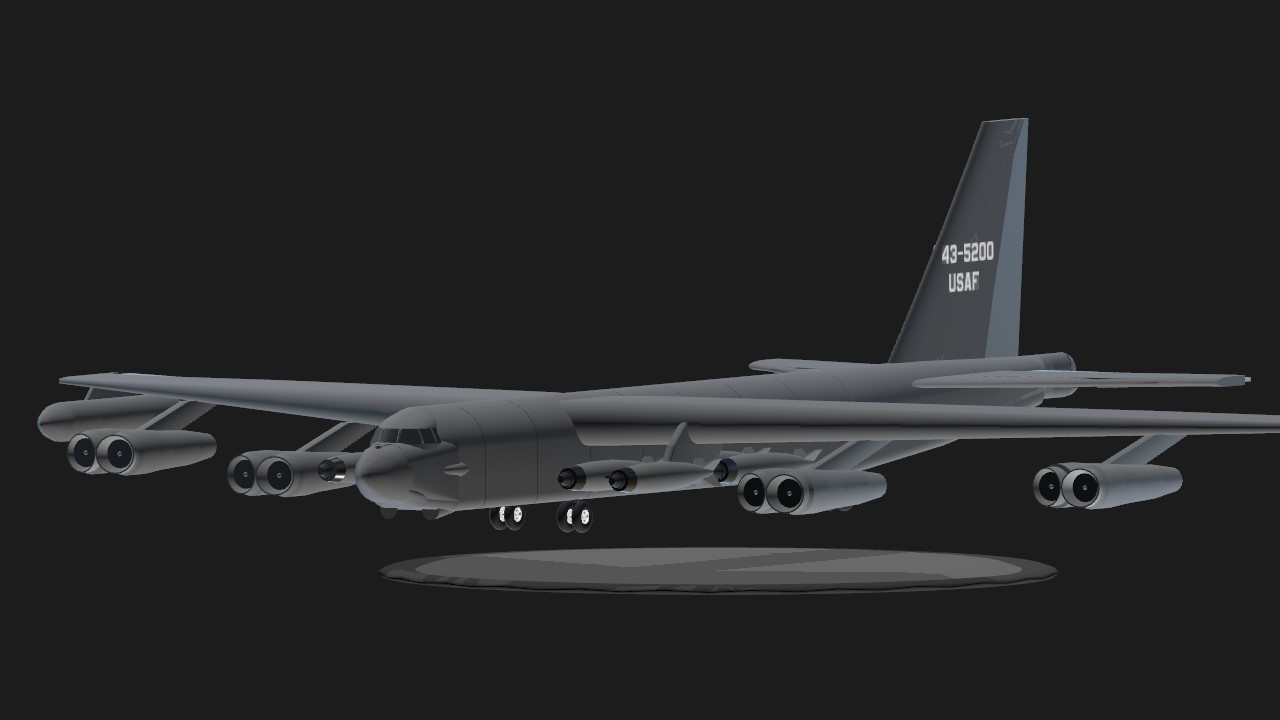
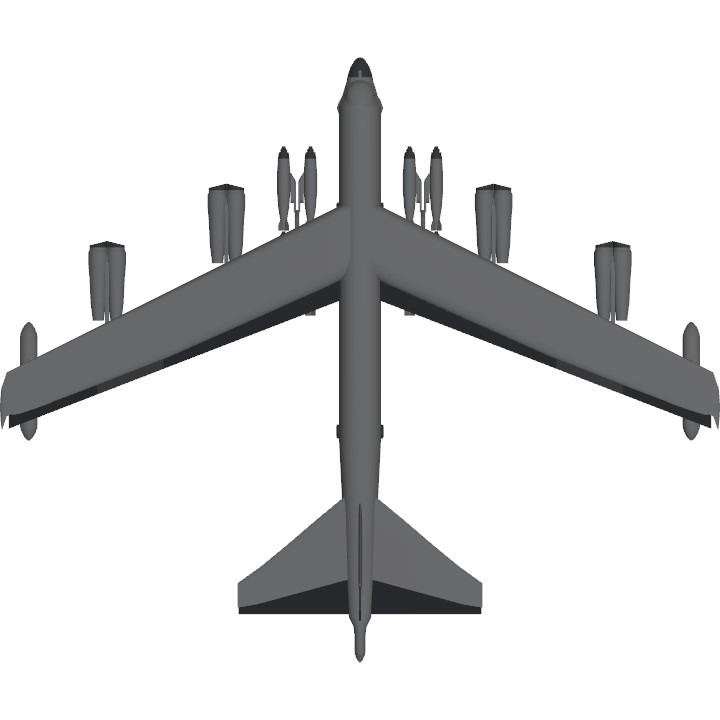
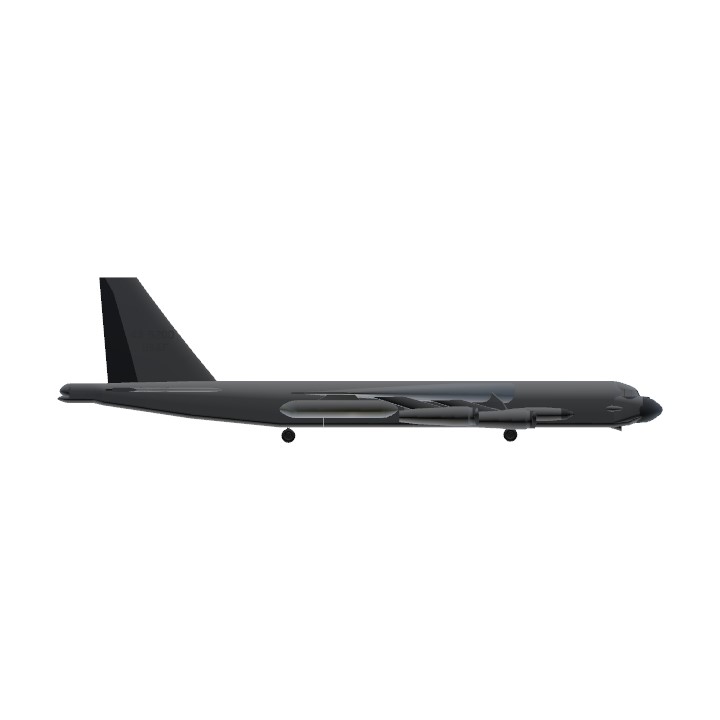
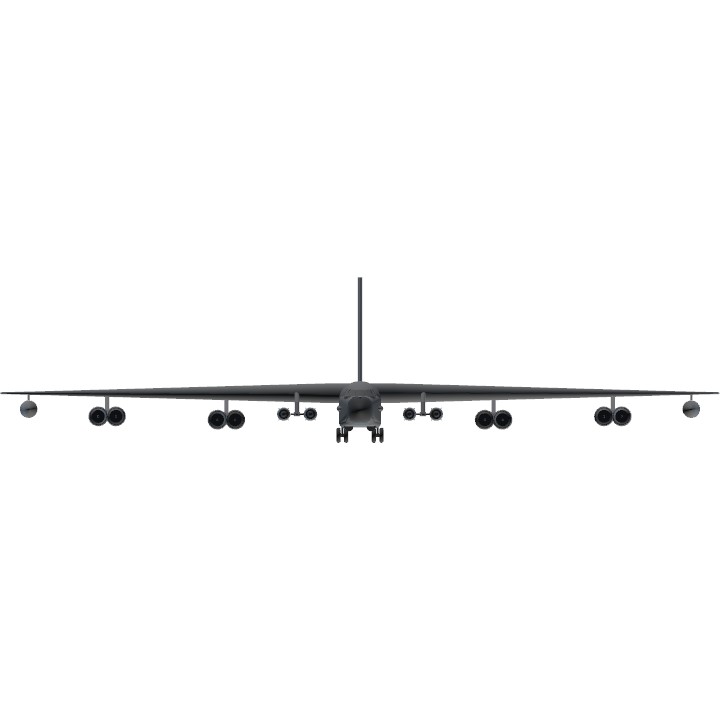
NUKE THE HOUSE
@WaterFlavouredSpitfires thx
@Transair56 Nice
@WaterFlavouredSpitfires yes
@Transair56 huh a Louisianan
@WaterFlavouredSpitfires
Barksdale Air Force base is in my State!!
@Transair56 yes everyone does that….
@WaterFlavouredSpitfires no way he used postimage!!!
Rule Osama!!!!
@WaterFlavouredSpitfires BRITANNIA RULES THE WAVES!
@SamilanTransportSector Rule Britannia!!! 🇬🇧🇬🇧🇬🇧🇬🇧
@WaterFlavouredSpitfires HURRICAAAAANE! 🦁🦁🦁🦁🦁🏴🏴🏴🇯🇪🇬🇪🇮🇲🇬🇧
@SamilanTransportSector RAAHHHH 🦅🦅🦅🇺🇸🇺🇸🇺🇸 💣💣💣
Brought freedom to the USS Tiny.